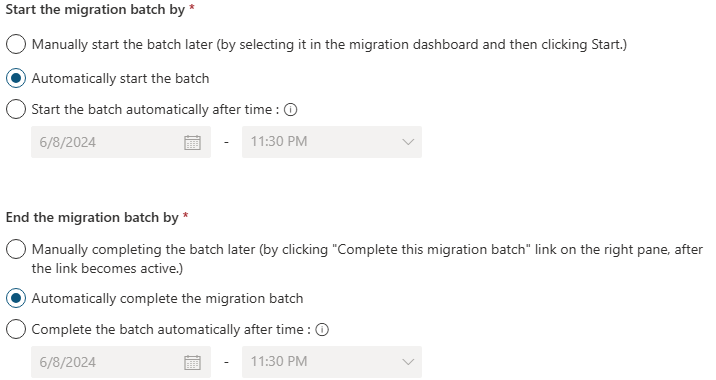You can use hybrid migration method to perform smooth migration from on-premises Exchange Server to Microsoft 365. For migrating mailboxes and other data from local server to cloud, you can create migration batches. After creating and starting the migration batches, you can check the status of migration batches using the Get-MigrationUserStatistics PowerShell command (see the below example) in the Exchange Management Shell (EMS).
Get-MigrationUser -BatchId "<batch name>" | Get-MigrationUserStatistics

This will show the Status of migration batch, the Items Synced, and the Items Skipped. However, you may find that the migration is stuck at syncing. This means that the migration batch has not even started yet. Below, we will discuss the troubleshooting steps to fix the migration stuck at syncing issue when migrating to Microsoft 365. But before that, let’s find out the reasons behind such an issue.
Causes for Migration Stuck at Syncing Issue
A migration batch gets stuck in the synchronization phase due to the following reasons:
- Bandwidth issues from the local Exchange Server to the Microsoft 365 may stop or delay the migration of data.
- Blocked ports or limited traffic from the internal network. It’s important that the Exchange Server has full unrestricted access to the internet, until the transfer of data is complete.
- Issue with the mailbox or mailboxes in the batch. If there is an issue with the mailbox, like consistency or other issues, this might affect data migration.
- Configuration issues with the local Exchange Server.
- Misconfiguration of the hybrid setup. Manually changing the send/receive connectors or any other configuration can stop or delay the transfer of data.
- Large mailboxes can affect the migration. Therefore, cleanup of the local mailboxes should be done prior to the migration.
How to Fix Migration Stuck at Syncing issue when Migrating to Microsoft 365?
Here are some possible solutions to fix the migration stuck at syncing issue.
1. Recreate and Modify the Migration Batch
You can delete the migration batch and then recreate it. This will help resolve the problem (if any) in the creation of the migration batch.
First, you need to stop the migration batch as the Exchange Server will not allow you to delete the migration batch if it is in progress. For this, open the Exchange Management Shell (EMS) and run the below command:
Stop-MigrationBatch -Identity "<batch name>"

Once this is complete, you can remove the migration batch by using the Remove-MigrationBatch command (see the below example).
Remove-MigrationBatch -Identity "<batch name>"

After this is complete, run the Get-MigrationBatch PowerShell command to check if the migration batch is deleted.
After this, you can recreate the migration batch and see if the issue persists. If the issue persists, it means there is a problem with one or more mailboxes in the migration batch. In such a case, you can reduce the number of mailboxes or try to create a migration batch per mailbox to identify the problematic mailbox. Then, you can tackle the issue with that mailbox.
2. Create Migration Batch from Exchange Admin Center (EAC)
It might happen that the migration batch was not set correctly from the Exchange Management Shell (EMS). In such a case, you can try to create the migration batch from the online Exchange Admin Center (EAC) by following these steps:
- Open the Exchange Admin Center (EAC).
- Click on the Schedule tab.
- On the Add migration batch window, tick the Automatically start the batch in the Start the migration batch by section.
- Also, tick the Automatically complete the migration batch option in the End the migration batch by section. Make sure to select the Automatically complete the migration batch. If it is not selected, the migration batch will not start.

An Alternative Solution to Migrate Data to Microsoft 365
Migrating data from an on-premises Exchange Server to Microsoft 365 using native methods can present several challenges—ranging from complex configurations and downtime to mailbox mapping issues and synchronization delays. To ensure a smooth, efficient, and error-free migration, a more streamlined and reliable solution is to use a specialized tool like Stellar Migrator for Exchange.
Stellar Migrator for Exchange is purpose-built for performing direct mailbox and public folder migrations from Exchange Server to Microsoft 365 or another live Exchange Server. The tool simplifies the migration process with features such as automatic and manual mailbox mapping, parallel mailbox migration, priority-based mailbox migration, allowing administrators to execute large-scale or staged migrations with minimal disruption and effort. The software supports the migration of user mailboxes, archive mailboxes, and public folders, ensuring complete data transfer while preserving folder hierarchy and mailbox structure.
Was this article helpful?